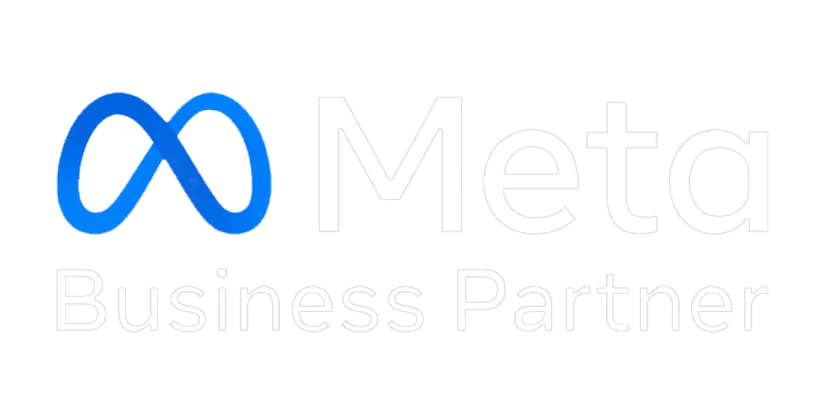WhatsApp Broadcast for Business: The Complete Guide for D2C Brands
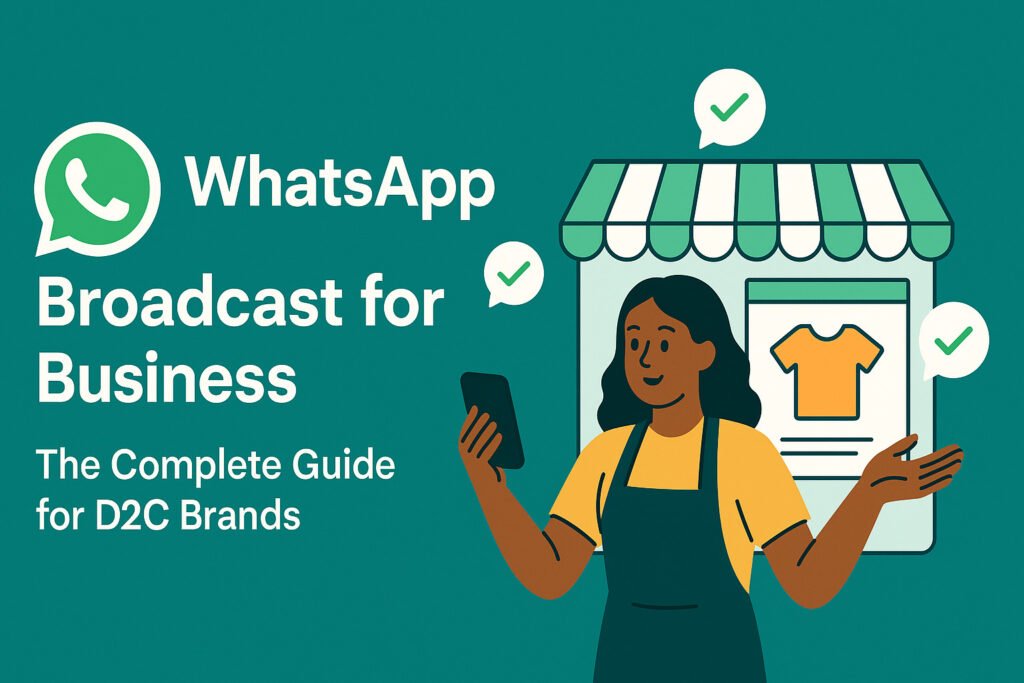
Introduction Today’s customers are scroll-fatigued and notification-blind. Emails get buried, SMS feels spammy, but WhatsApp has become the most direct and personal business channel with over 2.7 billion active users worldwide. For D2C brands, WhatsApp Broadcast offers a powerful way to: With The BotMode, you can automate, personalize, and scale your WhatsApp Broadcast campaigns while staying fully compliant with WhatsApp’s rules. What is WhatsApp Broadcast? A WhatsApp Broadcast lets businesses send a single message to multiple users at once — without creating a group. Example: A clothing brand sends a broadcast—“New festive collection is live 🎉 Click here to shop before stocks run out!” Why Use WhatsApp Broadcast for Business? 1. High Engagement Open rates exceed 90%, far higher than email (20–25%) or SMS (10–15%). 2. Personalized Messaging With The BotMode, you can insert dynamic fields like customer name, last order, or location. 3. Multi-Use Cases 4. Interactive Experience Send catalogs, quick-reply buttons, and call-to-action (CTA) messages directly inside WhatsApp. WhatsApp Broadcast vs WhatsApp Group Feature Broadcast Group One-to-many messaging ✅ Yes ✅ Yes Privacy (others can’t see) ✅ Yes ❌ No Professional use ✅ Ideal ❌ Limited Automation support ✅ With API ❌ No Clearly, Broadcast > Group when it comes to scaling business communication. How WhatsApp Broadcast Works with The BotMode Best Practices for WhatsApp Broadcast Campaigns WhatsApp Broadcast Compliance Rules WhatsApp has strict policies: The BotMode ensures all broadcasts are 100% compliant with WhatsApp Business API rules. Real Business Example A D2C wellness brand used The BotMode to send a festival broadcast announcing “Buy 1 Get 1 Free” on supplements. FAQs Q1. How many people can I reach with WhatsApp Broadcast? With the WhatsApp Business API (via The BotMode), you can reach unlimited customers, unlike the 256-contact limit of the free WhatsApp app. Q2. Can I personalize WhatsApp Broadcast messages? Yes, The BotMode allows you to insert dynamic tags like customer name, order ID, or last purchased product. Q3. Is WhatsApp Broadcast free? No. It follows a conversation-based pricing model set by Meta. The BotMode provides transparent rates with minimal markup. Conclusion WhatsApp Broadcast is more than a marketing tool — it’s a direct sales channel. When paired with automation, segmentation, and AI personalization via The BotMode, it becomes your brand’s secret weapon to boost engagement, increase revenue, and build loyalty. 🚀 Ready to scale your outreach? Book a free demo with The BotMode and start broadcasting smarter today.
Unlock Growth with WhatsApp Upsell & Cross-Sell Campaigns: The Complete Guide for D2C Brands

Introduction For D2C brands, average order value (AOV) and repeat purchases are two critical growth levers. Traditional email or SMS campaigns often get ignored, but WhatsApp has become the most engaging commerce channel with open rates above 90%. This makes it the perfect platform for upselling (encouraging customers to buy a higher-value product) and cross-selling (suggesting complementary products). With The BotMode, you can run automated WhatsApp upsell and cross-sell campaigns that not only drive revenue but also feel like natural conversations. What is WhatsApp Upselling? Upselling is convincing a customer to purchase a higher-end, upgraded, or premium version of the product they are already considering. Example: A customer adds a basic protein powder to their cart → you send a WhatsApp message suggesting the advanced protein blend with more nutrients. Benefits of Upselling on WhatsApp: What is WhatsApp Cross-Selling? Cross-selling is recommending related or complementary products to the one a customer has bought or is considering. Example: A customer buys running shoes → you send a WhatsApp message recommending moisture-wick socks or a fitness smartwatch. Benefits of Cross-Selling on WhatsApp: Why Use WhatsApp for Upsell & Cross-Sell Campaigns? Unlike email or SMS, WhatsApp provides real-time, interactive, and personalized communication. Proven WhatsApp Upsell & Cross-Sell Strategies 1. Post-Purchase Upsell Send a follow-up WhatsApp message after purchase:“Thanks for your order Customers who bought this also loved [Product X]. Want me to add it to your order?” 2. Abandoned Cart with Upsell Instead of a generic cart reminder, send:“You left [Product A] in your cart. Upgrade to [Premium A+] today at 10% off!” 3. COD Order Confirmation with Cross-Sell Confirm the order via WhatsApp and add:“Would you like to add [Accessory/Product B] with free shipping to your order?” 4. Personalized Recommendations Use purchase history to suggest new arrivals:“Hi [Name], since you loved our [Category], we think you’ll enjoy [New Collection].” 5. Limited-Time Bundles Offer bundle deals on WhatsApp:“Get [Product A + Product B] together at 15% off. Offer valid till midnight.” How The BotMode Makes Upselling & Cross-Selling Easy With The BotMode, D2C brands can set up: Instead of sending generic messages, The BotMode ensures each customer receives the right product recommendation at the right time. Real-World Example A D2C skincare brand using The BotMode ran WhatsApp upsell campaigns targeting customers who bought face wash. They suggested adding moisturizer or upgrading to a skincare kit. Best Practices for WhatsApp Upsell & Cross-Sell FAQs Q1. Can I automate WhatsApp upsell campaigns? Yes. With The BotMode, you can set triggers like purchase, delivery, or abandoned cart to automatically send upsell/cross-sell offers. Q2. How are WhatsApp campaigns better than email upselling? WhatsApp has higher open & response rates, allows interactive product cards, and delivers a personal shopping assistant experience. Q3. Is this allowed under WhatsApp Business Policy? Yes. As long as you use pre-approved WhatsApp templates and comply with user consent guidelines. Conclusion Upsell and cross-sell campaigns are not just sales tactics — they are ways to add value for customers. With The BotMode, your brand can leverage WhatsApp’s high engagement, AI-driven personalization, and automation to unlock higher order values and repeat sales. Ready to start? Book a free demo with The BotMode and see how WhatsApp can boost your growth.
Best WhatsApp Marketing Tool in 2025: A Complete Guide for Businesses

Introduction: Why Choosing the Best WhatsApp Marketing Tool Matters WhatsApp has become the backbone of customer communication for businesses worldwide. From D2C brands to enterprises, the right WhatsApp marketing tool can improve conversions, reduce RTOs, and build lasting customer trust. But with dozens of providers in the market, one question stands out: Which is the best WhatsApp marketing tool in 2025? Let’s compare the top options. TheBotMode — The AI-Powered WhatsApp Marketing Tool for D2C Brands TheBotMode is redefining WhatsApp marketing by going beyond bulk messaging. Built for D2C and eCommerce brands, it focuses on AI-driven automation, personalization, and revenue optimization. Key Features of TheBotMode: Best For: Top WhatsApp Marketing Tools in 2025 1. TheBotMode 2. AiSensy 3. WATI 4. Gupshup 5. Interakt Quick Comparison Table (2025) Tool Best For Strengths Weaknesses TheBotMode D2C, Shopify, WooCommerce AI smart scheduling, RTO reduction, commerce-first automation Newer player, growing adoption AiSensy SMBs, startups Broadcasts + automation Higher pricing at scale WATI Agencies, SMBs Chatbot builder, team inbox Costlier than local tools Gupshup Enterprises Global API power Steeper learning curve Interakt D2C SMBs CRM + affordable plans Less automation depth How to Pick the Best WhatsApp Marketing Tool for Your Business The best tool depends on your business model, scale, and priorities: FAQs Q1: Which is the best WhatsApp marketing tool for D2C brands in India? 👉 TheBotMode is designed specifically for D2C, with AI flows, COD verification, and Shopify/WooCommerce integrations. Q2: What’s the cheapest WhatsApp marketing tool? 👉 Interakt offers entry-level affordability, but TheBotMode balances cost with AI-driven features. Q3: Is WhatsApp marketing legal? 👉 Yes — but only if you use official WhatsApp Business API providers like TheBotMode, AiSensy, or WATI. Q4: Which WhatsApp tool is best for reducing RTOs? 👉 TheBotMode stands out with RTO-focused flows, COD verification, and delivery reminders.
From Broadcast to Conversion: WhatsApp Message Marketing for D2C Brands
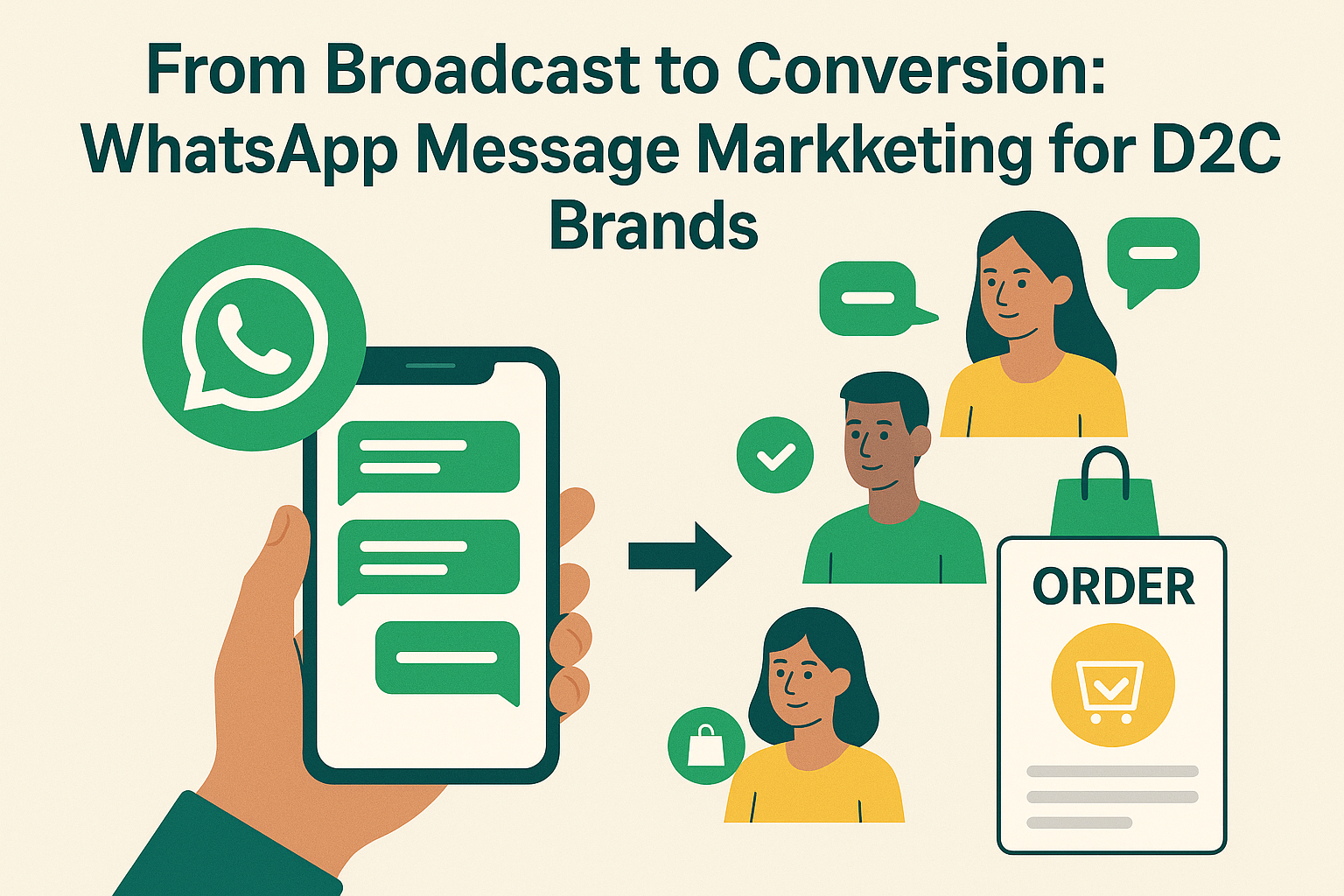
Introduction In a crowded digital space, D2C brands face rising customer acquisition costs, low email engagement, and waning SMS effectiveness. But there’s one channel that’s defying these trends: WhatsApp message marketing.With open rates nearing 98% and click-throughs that dwarf traditional channels, WhatsApp is fast becoming a critical tool for D2C brands aiming to convert broadcasts into real revenue. In this post, you’ll learn how to structure your WhatsApp approach — from opt-in to broadcast to conversion flows — backed by strategies, templates, and metrics designed especially for D2C brands. From Broadcasters to Converters: Strategy Framework 1. Opt‑in & Subscriber Growth 2. Crafting Broadcasts That Engage (Not Annoy) 3. Automations & Sequences 4. Click‑to‑WhatsApp & Conversational Funnels Case Studies & Examples (If you like, I can fetch brand names and numbers for your niche.) Implementation Roadmap for D2C Brands Phase Focus Actions Phase 1 Setup & compliance Apply for API access, approve templates, collect opt-ins Phase 2 Pilot broadcasts & flows Run test campaigns, simple flows Phase 3 Segment & automate Build more audience segments, more sequences Phase 4 Optimize & scale A/B testing, refine copies, scale budgets Also consider tools or platforms that ease the integration, automation, analytics — and always track link-level metrics for attribution. Conclusion Broadcasts are the starting point — the real power of WhatsApp marketing lies in conversion-focused flows, personalization, and automation. For D2C brands, WhatsApp can become a core channel for engagement, sales, and retention. If you want to see how we implement WhatsApp strategies for D2C brands or scale message marketing, check out how we help at The BotMode. FAQs How often should a D2C brand send WhatsApp broadcasts? 1–3 high-value messages per week is a good benchmark. Overdoing it can lead to opt-outs. Will customers find WhatsApp marketing intrusive? Not if they opted in and messages are relevant, timely, and conversational. Always include opt-out choice. Which is better: WhatsApp or email marketing for D2C? WhatsApp often outperforms email in open and click-through rates, but they complement each other — use both. How many messages per month is safe before unsubscribes rise? It depends on your niche and content quality, but exceeding 10–12 generic blasts monthly is risky — always monitor opt-out rates. Can small D2C brands with limited budgets use WhatsApp message marketing? Yes — start small with basic broadcasts or transactional flows, use affordable API platforms, reinvest returns, and gradually scale.
How D2C Brands Can Win with WhatsApp Business Marketing
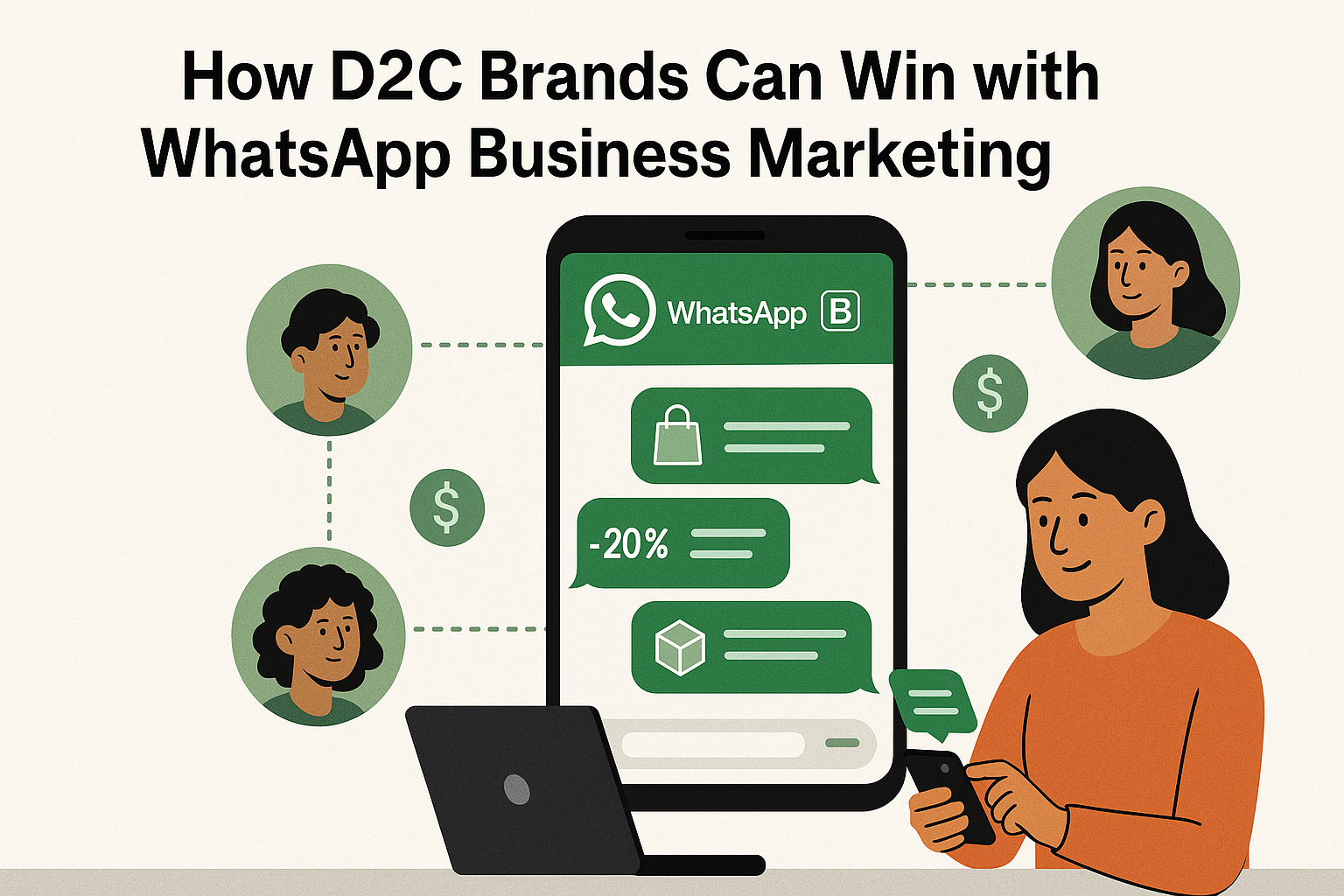
Introduction Did you know WhatsApp messages enjoy an open rate of nearly 98%, far surpassing email and SMS? For Direct-to-Consumer (D2C) brands, this makes WhatsApp an untapped goldmine for building stronger customer relationships, driving engagement, and boosting sales. In today’s world where acquisition costs are soaring and customer attention spans are shrinking, WhatsApp Business offers a direct, personal, and conversational channel that meets consumers where they already are—on their phones. This blog will explore how D2C brands can harness WhatsApp Business for marketing success, diving into strategies, tools, best practices, KPIs, and real-world case studies. 1. What is WhatsApp Business & WhatsApp Message Marketing? WhatsApp Business is an application (and API) designed to help businesses connect with their audience through one-on-one messaging, automation, and customer support tools. WhatsApp Message Marketing refers to using the platform to send personalized promotions, reminders, updates, and re-engagement messages. Unlike email or SMS, WhatsApp feels personal and conversational, making it especially powerful for D2C brands that thrive on direct customer connections. 2. Why WhatsApp Outperforms Email & SMS for D2C Brands For D2C brands that rely on repeat purchases and community building, these factors give WhatsApp a competitive edge. 3. Winning WhatsApp Business Strategies for D2C Brands 3.1 Segmented Campaigns & Promotions Send tailored messages to customer segments—new customers, loyal buyers, or inactive users.Example: “Hi [Name], your favorite skincare line is back in stock. Shop now!” 3.2 Cart Abandonment Recovery Use reminders to bring shoppers back.Example: “Oops! You left something behind. Complete your order now and enjoy free shipping.” 3.3 Click-to-WhatsApp Ads Run Instagram/Facebook ads that drive users directly into WhatsApp chats. This shortens the funnel and boosts conversions. 3.4 Order Updates & Customer Support Automate transactional messages like confirmations, dispatch, and tracking. Customers appreciate real-time updates. 3.5 Exclusive Offers & Loyalty Rewards Reward WhatsApp subscribers with special discounts or VIP access to launches. 3.6 Collect Reviews & User-Generated Content Request feedback post-purchase and encourage customers to share pictures or reviews. 3.7 Re-engagement Campaigns Re-target inactive users with product suggestions or discounts after 30/60/90 days of inactivity. 4. Measuring Success: Key WhatsApp KPIs 5. Case Studies: WhatsApp in Action for D2C Brands These examples prove WhatsApp can transform marketing outcomes for consumer-driven businesses. Conclusion WhatsApp Business is no longer optional—it’s a must-have for D2C brands that want to connect with customers directly, personally, and effectively. From promotions and cart recovery to loyalty programs and feedback collection, WhatsApp enables brands to drive engagement, sales, and long-term loyalty. 👉 Ready to scale your brand with WhatsApp Business? Start with TheBotMode’s WhatsApp marketing solutions today: Visit TheBotMode. FAQs Q1. Is WhatsApp Business marketing legal? Yes, but you must obtain customer opt-in before sending promotional messages. Q2. How often should D2C brands send WhatsApp messages? 2–4 times per month is safe. Focus on quality and value over frequency. Q3. Can WhatsApp be used for international marketing? Yes. As long as your customers opt in, WhatsApp works globally. Q4. What is the cost of WhatsApp Business API? Pricing varies by provider and country, usually per message.
The Post-Purchase Power: Reducing RTOs by Building Trust with WhatsApp
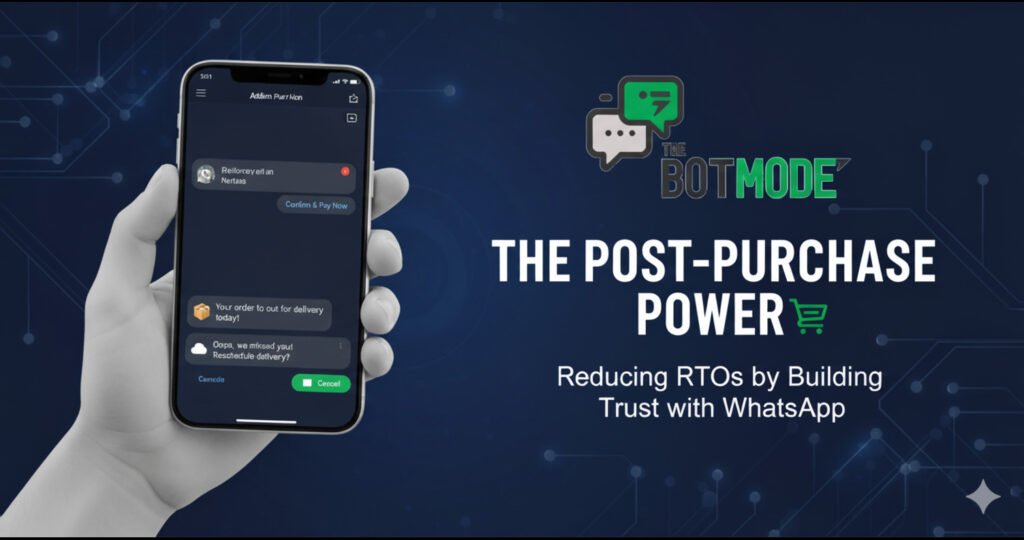
The Silent Killer for D2C Brands: Why RTO Is More Than Just Logistics For any Direct-to-Consumer (D2C) brand, the “buy now” click is a win. But for many brands, especially those relying on Cash on Delivery (COD), this win is short-lived. The culprit? Return to Origin (RTO). RTO isn’t just a logistics headache—it’s a trust problem. Fixing it requires more than courier coordination. The solution lies in proactive post-purchase communication. And the most powerful channel for this is WhatsApp. WhatsApp Marketing for RTO Reduction: Why Communication Matters Traditional brands rely on one dry SMS or email: “Your order has been shipped.” But in 2025, that’s not enough. Building trust is a journey, not a one-time update. Platforms like The Botmode transform WhatsApp into a post-purchase communication engine. Here’s how: 1. Real-Time Order Journey on WhatsApp 2. COD to Prepaid Conversion: Building Trust Through Incentives Since COD orders drive most RTO losses, encouraging prepaid is key. This improves cash flow and slashes RTO risk. 3. Handling Non-Delivery Reports (NDRs) with AI Failed delivery attempts are where most brands give up. But smart WhatsApp automation changes the game: This saves orders from RTO and turns a negative experience into positive customer service. Why The Botmode Is Built for RTO Reduction Unlike generic tools, The Botmode is tailored for D2C brands and ecommerce RTO challenges. Instead of reacting to RTOs, The Botmode helps you prevent them by building trust through personalized WhatsApp marketing. FAQs Q1. What is RTO in ecommerce? RTO (Return to Origin) occurs when a shipped order is returned without delivery, causing extra shipping costs and inventory blocks. Q2. How does WhatsApp help reduce RTO? Through proactive order confirmations, real-time tracking, COD-to-prepaid conversions, and automated NDR handling. Q3. Is RTO a big challenge for D2C brands? Yes, especially for COD orders with 20–30% RTO rates in India. Q4. Can I automate RTO reduction with WhatsApp? Yes. With The Botmode, you can automate the entire journey—from order confirmation to rescheduled deliveries. Q5. Does The Botmode integrate with Shopify? Yes, The Botmode integrates seamlessly with Shopify for real-time automation. Q6. How do I convert COD to prepaid using WhatsApp? By sending a secure payment link with a small incentive (discount, cashback, or freebie) to encourage prepaid completion. Conclusion: RTO reduction isn’t about pushing logistics harder. It’s about building customer trust after purchase. With WhatsApp marketing automation, The Botmode empowers D2C brands to: Ready to see results? Book a free demo with The Botmode today and discover how to reduce return to origin rates and build stronger customer relationships.
Top 7 WhatsApp Drip Campaign Tools in 2025
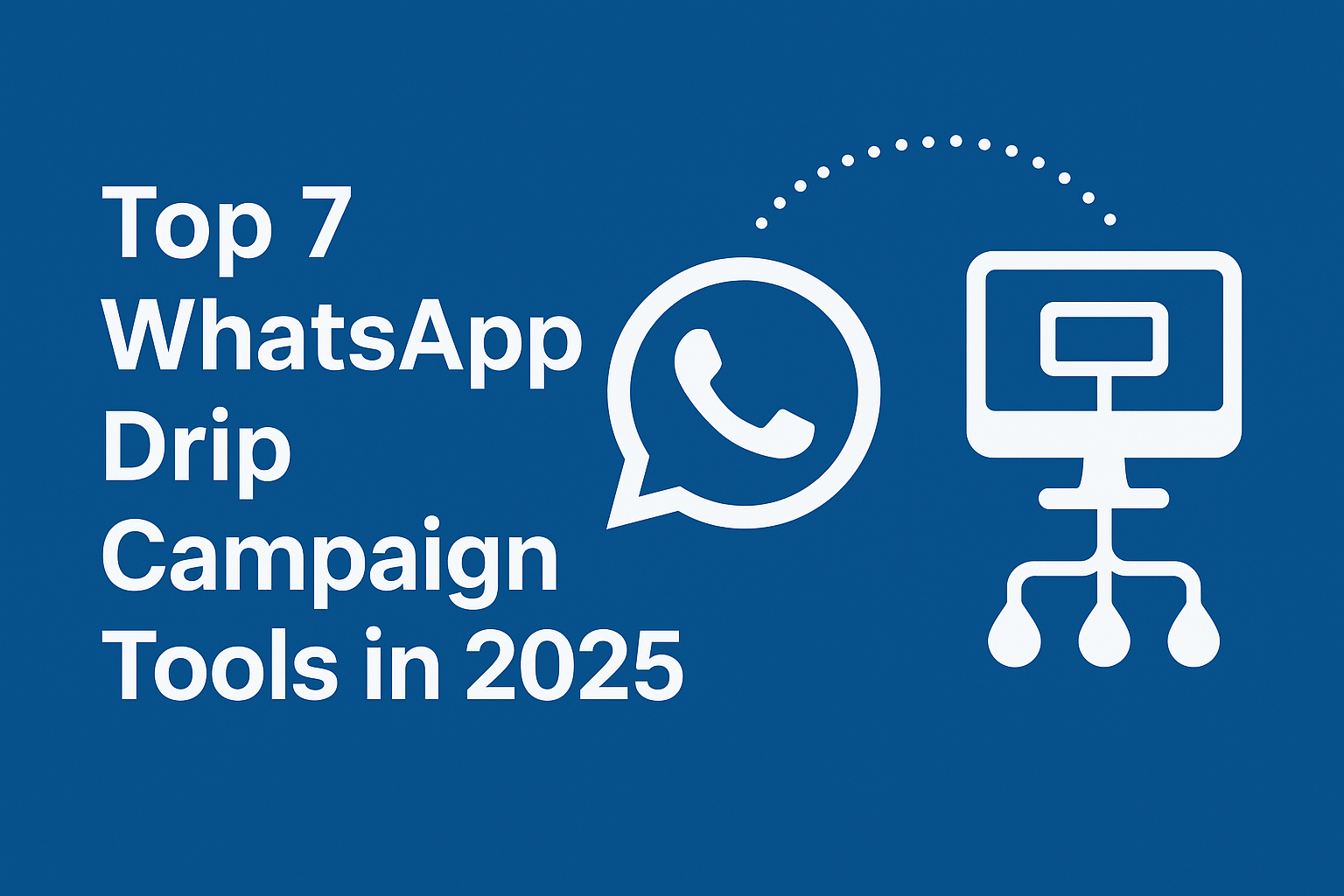
Introduction WhatsApp drip campaigns have become a game-changer for D2C and eCommerce brands. Instead of sending one-off broadcasts, businesses now automate personalized message sequences—whether it’s nurturing leads, reminding about abandoned carts, or driving repeat purchases. But with so many providers in the market, which tool should you choose?Here’s a list of the 7 best WhatsApp drip campaign tools in 2025—including a new player making waves: TheBotMode. 1. TheBotMode Best for D2C brands who want affordability + advanced automation TheBotMode is designed specifically for D2C and Shopify/WooCommerce merchants. Unlike most providers that only offer basic broadcasts, TheBotMode focuses on conversion-driven automation. Key Features 👉 Ideal for growing D2C brands who need results without burning budget. 2. Wati Best for businesses needing team inbox + automation Wati is a popular global WhatsApp solution. It combines team collaboration with drip campaign automation. Key Features 3. AiSensy Best for SMEs who want plug-and-play marketing AiSensy provides an easy dashboard for drip campaigns, WhatsApp broadcasts, and chatbots. It’s beginner-friendly, making it popular among SMEs and startups. Key Features 4. Interakt Best for WhatsApp CRM + simple automations Interakt offers a lightweight WhatsApp CRM with automation. It’s more suited for smaller businesses that need a WhatsApp-first customer management tool. Key Features 5. Gupshup Best for enterprises with custom integrations Gupshup is one of the oldest players in conversational messaging. It’s highly developer-friendly, with APIs for custom WhatsApp workflows. Key Features 6. Twilio Best for developers building from scratch Twilio provides flexible APIs for WhatsApp but requires coding to build drip campaigns. Great for businesses with in-house dev teams. Key Features 7. QuickReply.ai Best for Shopify merchants with advanced workflows QuickReply.ai is a specialized WhatsApp automation platform for Shopify. It has APIs to trigger drip campaigns and segment customers dynamically. Key Features Conclusion Choosing the right WhatsApp drip campaign tool depends on your business size, budget, and goals. 👉 In 2025, the real winners will be brands that combine automation + personalization, and TheBotMode is built exactly for that.
What Are WhatsApp Opt-Ins and Why Your Business Needs Them

A WhatsApp opt-in is explicit permission from a person to receive messages from your business on WhatsApp. Without it, you cannot send business-initiated messages (marketing, utility, authentication). Your opt-in must clearly mention WhatsApp, name your business, set expectations, and offer a simple opt-out. In India, align consent with DPDP principles (freely given, specific, informed, unambiguous, and revocable). What exactly is a WhatsApp opt-in? A WhatsApp opt-in is a user’s explicit consent that authorizes you to contact them on WhatsApp outside the 24-hour service window. A valid opt-in should: Why your business needs opt-ins What counts as a valid opt-in? High-intent places to collect WhatsApp opt-ins India checklist: DPDP-ready consent Template categories & expectation setting The BotMode way: compliant opt-ins that convert Copy-paste consent examples Website checkbox (short): “I agree to get order updates, reminders, and offers on WhatsApp from TheBotMode. Opt out anytime.” Popup (value-led): “Get shipping alerts + exclusive offers on WhatsApp from The BotMode. Reply STOP to unsubscribe.” WhatsApp confirmation (double opt-in): “Confirm you’d like to receive order updates and offers from The BotMode on WhatsApp. Reply YES to confirm or STOP to opt out.” What to store for every opt-in FAQs 1) Can I message someone first without opt-in? No. You need opt-in for business-initiated messages. You can reply within 24 hours of a user’s inbound message for service conversations. 2) Does a user saying “Hi” count as opt-in? No. It only opens a 24-hour service window for support; future business-initiated messages still require opt-in. 3) What should my opt-out flow look like? Accept STOP/UNSUBSCRIBE in WhatsApp and propagate the suppression to all tools, segments, and data stores. 4) What’s specific to India? Follow DPDP principles: ensure consent is freely given, specific, informed, unambiguous, and easy to withdraw.
Retail & E-commerce: Driving More Repeat Sales Through WhatsApp Messaging
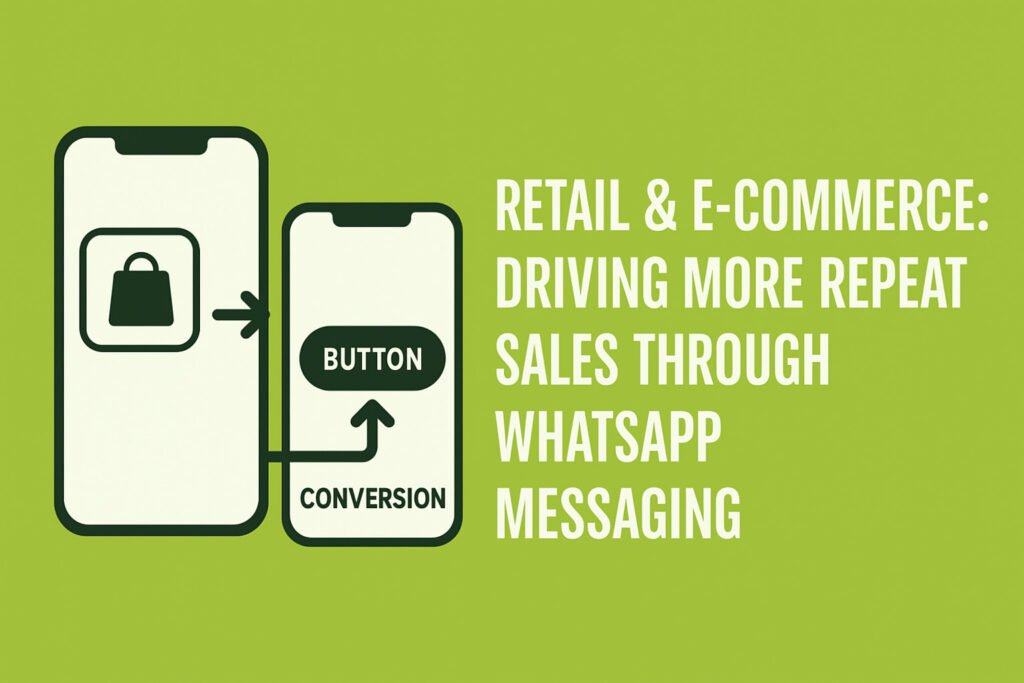
Why Repeat Sales Matter for D2C & eCommerce Brands For D2C and eCommerce businesses, repeat customers are the backbone of growth. Acquiring new customers is expensive, but retaining them can increase profits by up to 25–95% (Harvard Business Review). WhatsApp Business API is now the preferred channel for building these loyal, long-term customer relationships. At The BotMode, we’ve seen brands double their retention and repeat order rates by strategically using WhatsApp automation. Let’s break down how you can do the same. Why WhatsApp is Perfect for Driving Repeat Sales Here are five reasons why WhatsApp outperforms email and SMS for retention: WhatsApp Strategies for Building Strong Customer Relationships Personalized Recommendations 72% of customers engage more with personalized WhatsApp campaigns. Use customer data to send tailored offers that make them feel valued. Loyalty Programs & Exclusive Offers Deliver VIP access to sales, points updates, or birthday discounts via WhatsApp – more personal than email. Post-Purchase Engagement Confirm orders instantly, share delivery updates, and request feedback. Example: Perfora (oral care brand) collects 2x more feedback on WhatsApp vs. email. Interactive Content Polls, quizzes, or product tutorials keep engagement high while also giving insights into customer needs. Customer Support & Assistance Faster query resolution and guided shopping directly on WhatsApp improve satisfaction and repeat orders. How to Automate Repeat Sales on WhatsApp Tracking Success of WhatsApp Repeat Sales Key Metrics – Repeat purchase rate, retention %, open & click rates, revenue from repeat customers.UTM Tracking – Add UTM parameters to WhatsApp links to track conversions inside Google Analytics.Customer Feedback – Collect ratings, NPS, and product reviews directly via WhatsApp surveys.A/B Testing – Test message timings, templates, and offers to see what drives the most repeat sales. WhatsApp + CRM + Shopify/WooCommerce = Retention Machine Integrate WhatsApp with your CRM (Zoho, HubSpot, Salesforce) and your eCommerce store (Shopify/WooCommerce). This ensures: At The BotMode, we specialize in connecting WhatsApp Business API with your eCommerce stack so you can run these campaigns seamlessly. Conclusion For D2C brands, repeat sales = sustainable growth. WhatsApp isn’t just another channel – it’s the fastest, most personal, and most engaging way to build customer loyalty at scale. With automation + personalization, you can turn first-time buyers into lifelong customers. Ready to drive more repeat sales for your brand?Talk to The BotMode Experts Today FAQs Q1: How can WhatsApp help increase repeat sales for D2C brands? WhatsApp enables direct, personalized, and interactive communication that improves retention, loyalty, and reordering. Q2: Is WhatsApp better than email for customer retention? Yes. With a 98% open rate, WhatsApp ensures your messages are seen, unlike email’s ~20%. Q3: Can I automate WhatsApp reordering reminders? Yes. With tools like The BotMode, you can automate reordering flows, subscription alerts, and reminders. Q4: How do I measure repeat sales from WhatsApp campaigns? Track metrics like repeat purchase rate, revenue contribution, CTRs, and use UTM tracking for campaign attribution. Q5: Which platforms integrate with WhatsApp for repeat sales? Shopify, WooCommerce, Magento, and CRMs like Zoho and HubSpot can easily integrate with WhatsApp Business API.
Abandoned Cart Reminders That Work: Best Practices for D2C Marketing
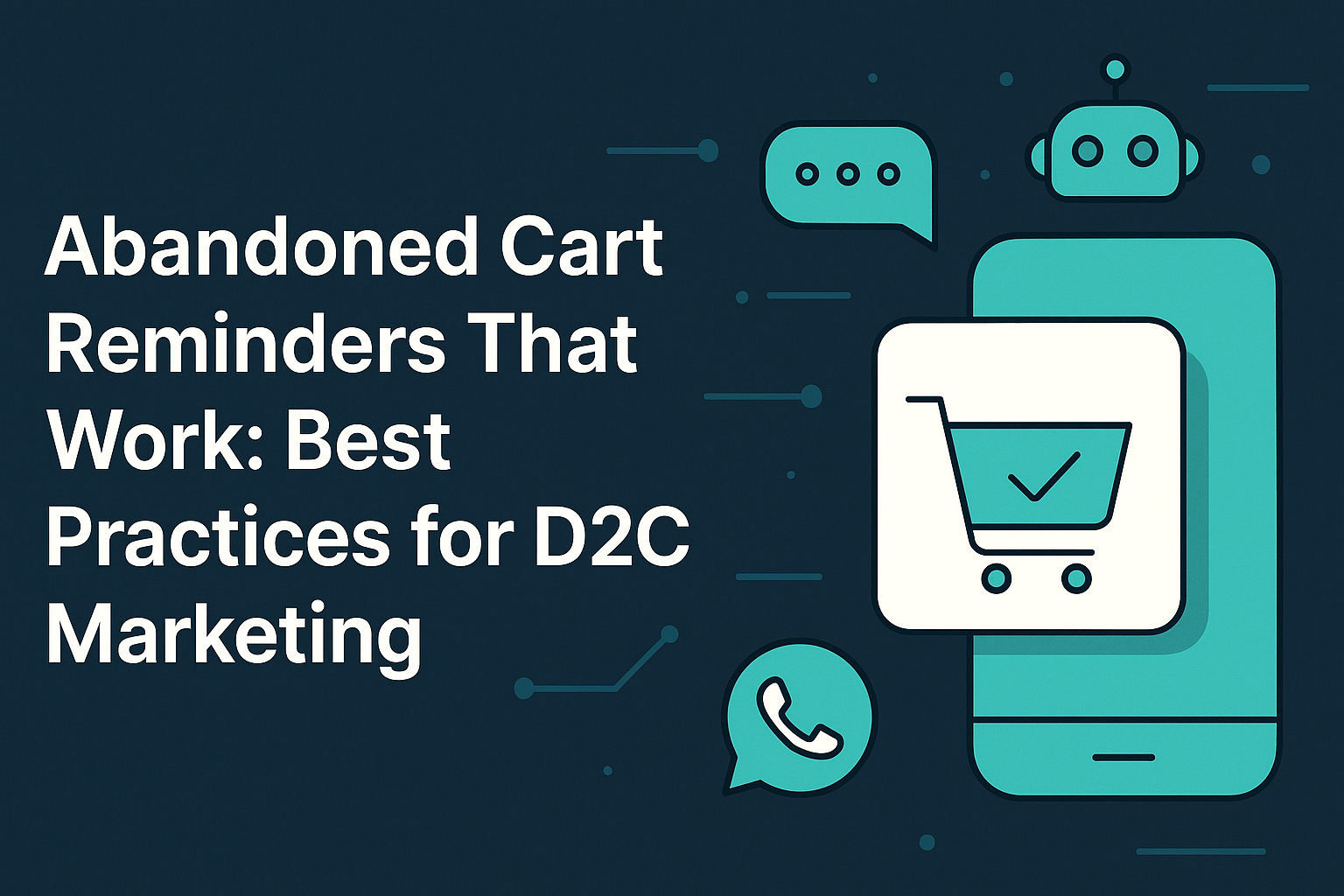
Introduction Every D2C brand faces it: potential customers fill their carts… then leave. These abandoned carts represent huge opportunity costs—but also big chances. An effective abandoned cart reminder strategy can convert a large chunk of that lost revenue. In this article, you’ll find best practices for abandoned cart reminders that work. We’ll cover: If you want, after reading this, you can also explore how TheBotMode helps with abandoned cart recovery. Why Carts Get Abandoned (So Your Reminders Hit the Right Pain Points) Understanding why people abandon carts is crucial to crafting reminders that resonate. Some of the top reasons are: Some stats to keep in mind: These numbers show two things: the scale of the problem and the real potential of good recovery/reminder strategies. Best Practices for Abandoned Cart Reminders Here are proven best practices D2C brands should adopt to make reminders effective. Timing & Frequency Channel Mix: Email, SMS, Push & WhatsApp Personalization & Content Incentives & Urgency Clear CTAs & Trust Factors Design & Mobile Optimization WhatsApp‑Specific Tips for Cart Recovery Since this channel is becoming indispensable, here are some deep‑dive best practices for WhatsApp cart recovery: Tracking, Measuring & A/B Testing To ensure your abandoned cart reminders keep improving, you need to track and test: Common Pitfalls & How to Avoid Them Tools & Platforms for Abandoned Cart Recovery Here are features or tools to look for (or that you might already be using or considering): Conclusion Abandoned carts are not just lost sales—they’re clues. When optimized, reminders are one of the highest‑ROI levers for D2C brands.The keys: If you’re ready to reclaim lost revenue, start by auditing your current abandoned cart flow, test one change at a time, and you’ll see improvements. For help getting started, check out our internal guide: Abandoned Cart Recovery. FAQs Q1: What is a good benchmark recovery rate for abandoned carts? A typical recovery rate ranges between 10‑30%, depending on industry, channel mix, and how well optimized your reminder flows are. Using channels with higher engagement, like WhatsApp, and well‑timed, personalized messages, helps push the rate toward the higher end. Q2: How many abandoned cart reminders should I send? Usually, 2‑3 reminders per cart work well. For example: one at ~1 hour after cart abandonment, another 12‑24 hours later, and possibly a third after about 24‑48 hours, with a stronger incentive if needed. Q3: Should I always offer a discount in the reminder messages? Not always. Discounts can help move customers, but overuse can erode margins or train customers to abandon carts in expectation of discounts. Offer incentives judiciously—especially for high‑value carts or when earlier reminders haven’t worked. Q4: Is WhatsApp more effective than email? It depends on your audience and context. WhatsApp typically has much higher open and engagement rates, more immediacy, and a conversational tone. But not everyone provides a WhatsApp contact, or opts in. Email remains important. A combined or multi‑channel flow usually works best. Q5: How do I ensure reminders comply with privacy laws? Ensure proper opt‑in permissions for channels like WhatsApp and SMS. Be clear about what messages you’ll send. Allow opt‐out. Store and handle personal data (names, contacts) securely. Be aware of GDPR, local privacy/data protection laws in your target markets.













